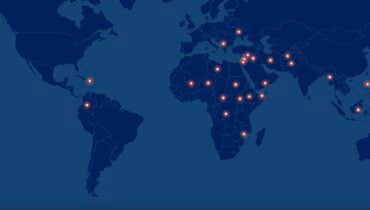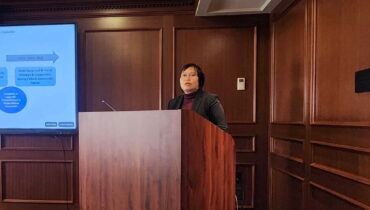“You can burn our village, but not our spirit and our soil.” Despite losing everything to military violence, women protesters gathered in the Sagaing Region of Burma¹—a powerful testament to resilience in the face of systematic oppression.
Burma’s protracted conflicts reveal how a traditional understanding of war fails to capture the complex interplay between gender and ethnic identity. This piece will discuss the compounded vulnerabilities and oppression that ethnic minority women face and explore the unique roles they play in peacebuilding given their overlapping identities.
Beyond Single-Axis Analysis: The Overlapping Nature of Oppression
Traditional conflict analysis often views struggles through a single axis of ethnicity or gender, without considering how these forms of oppression intersect. In Burma, when the military junta attacks villages and displaces communities, ethnic minority women face triple marginalization—as women, as members of ethnic groups, and as displaced persons. This reality manifests in stark statistics.
The Bamar represent the largest demographic group in Burma. Unlike the country’s ethnic minorities, including but not limited to the Rohingya, Karen, and Shan, Bamar women belong to the dominant cultural and linguistic community that has historically held greater political power and faced fewer targeted persecutions. However, they still confront significant gender-based challenges in Burma’s patriarchal society, including limited political representation, economic inequality, and vulnerability to gender-based violence. Their experiences differ markedly from those of minority ethnic women, who must navigate both gender discrimination and ethnic marginalization, creating a complex landscape of intersectional challenges across Burma’s diverse female population.
Ethnic identity shapes experiences of conflict and violence, and the Rohingya women’s situation provides a stark example of these intersecting challenges. As a Muslim minority group not recognized as citizens, Rohingya women face extreme persecution, such as restricted freedom of movement, forced labor, sexual violence, and denial of basic services. The military’s campaign against the Rohingya has involved widespread gender-based violence (GBV), with reports of mass killings, gang rapes, and forced disappearances that target women and girls.
The women in Shan State must navigate threats not only from the military junta but also from various armed groups, as evidenced by reports of sexual violence. Additionally, the disruption of traditional support systems and safe houses has left ethnic minority women more vulnerable to domestic violence in displacement camps, where cultural and linguistic barriers often prevent them from accessing what limited assistance is available.
In Karenni State, 50% of internally displaced women lack access to basic water, making essential menstrual hygiene impossible. The economic impact of conflict falls disproportionately on women in ethnic and religious minority communities, which have long been targets of the military junta. More than 580,000 women lost employment in just the first six months of 2021 following the military coup.
Different Experiences, Different Priorities
Minority ethnic women also face greater obstacles when it comes to advocacy, organizing, and representation in peace negotiations. Organizations dominated by ethnic majority Bamar women typically have greater access to state institutions, work more closely with the acting administration, and take less confrontational approaches.
In contrast, organizations led by ethnic minority women, like the Women’s League of Burma (WLB), were often formed in exile, have limited access to formal processes, and face heightened risks. They developed connections with ethnic resistance organizations and focused on both gender equality and ethnic rights.
Excluded from Formal Peace Process, but Building Bridges Across Divides
The peace process itself also reflects these discriminatory patterns against women and ethnic minorities. Despite women’s crucial stake in peace-building, they have been largely excluded from high-level negotiations. The number of women among official delegates in the National Ceasefire Agreement talk and Subsequent Union Peace Conference has been consistently low. The 52-member Union Peace-making Work Committee included only two women, and peace discussions are frequently framed as matters solely between armed groups, rather than considering impacted civilian communities.
This exclusion from formal processes led women’s organizations to develop alternative peacebuilding strategies, including “women-to-women diplomacy,” a term developed by Magda Lorena Cardenas and Elisabeth Olivius, which emphasizes shared experiences, promotes women’s agency, and maintains a commitment to gender equality as essential to sustainable peace.
A powerful example comes from the Women’s League of Burma (WLB), which comprises 12 women’s groups representing different ethnic communities. When formal peace negotiations between the military government and ethnic armed organizations largely exclude women, the WLB created a parallel process that exemplified women-to-women diplomacy. They established cross-ethnic dialogue spaces where women from conflict-affected communities, including but not limited to Bamar, Kachin, Shan, Karen, could share experiences of conflict and build solidarity despite historical ethnic tensions. This created trust networks spanning political and ethnic divides that the formal processes struggled to bridge.
The formation of the WLB in 1999 represented a groundbreaking effort to unite women across ethnic lines, and ethnic women in Burma continue to strategically leverage their identities to build peace across divides. As one activist quoted in the text explains, “Our country has been divided by ideology and ethnicity. We don’t trust each other, we don’t talk to each other a lot. Now we women can come together to voice the same thing, as women.”
The WLB successfully united women from different ethnic backgrounds by recognizing their common experiences as women while maintaining commitments to ethnic rights and self-determination. As another activist noted, “Every woman from urban or rural areas has been discriminated against. Our feeling is the same.” This dual identity allowed women activists to build bridges across conflict lines while maintaining legitimacy within their ethnic communities.
Women-led organizations, such as the WLB, support over 800 women human rights defenders and provide aid to nearly 6,000 internally displaced persons, demonstrating how women are not just victims of conflict but crucial agents of peace and security. These initiatives focus on immediate community protection needs while documenting human rights violations that formal processes often overlook.
Through these alternative approaches, women have managed to influence peace processes despite formal exclusion. Women-to-women diplomacy in the Burma context is particularly significant because it works across the complex ethnic divisions that have defined the country’s protracted conflicts, creating solidarity based on shared experience as women while representing diverse ethnic identities and perspectives. This further demonstrates how gender dimensions shape both the constraints women face and the innovative strategies they develop to overcome them.
The Path Forward: Inclusive Peacebuilding
The case of Burma highlights the urgent need for peacebuilding approaches that recognize and respond to intersecting forms of marginalization while amplifying the voices of those most affected by protracted armed conflict. International actors must strengthen the implementation of UN Security Council Resolution 1325 on Women, Peace and Security by providing direct, flexible funding to women-led organizations and creating safe channels for ethnic minority women to document human rights violations.
At the institutional level, establishing clear quotas for ethnic minority women’s representation in peace negotiations must be paired with reforms to ensure that aid distribution and support service are both gender-sensitive and culturally appropriate. Essential capacity-building efforts should focus on supporting networks that bridge ethnic divides while maintaining distinct culture identities.
Moving forward, conflict resolution efforts must prioritize the perspectives and leadership of ethnic minority women, not merely as victims to be protected but as crucial agents of change, whose experiences and strategies can inform more effective and sustainable paths to peace. The case of Burma challenges all actors to develop new frameworks that better capture the complexity of modern conflicts and the innovative ways in which marginalized groups resist and build peace across multiple dimensions of identity.
¹This author, and many activists, use the term “Burma” instead of “Myanmar,” a name change that they argue the military junta made in 1989 without the consent of the people. Though some view “Myanmar” as being more inclusive, they argue this inadvertently legitimizes the junta’s authority and minimizes their campaign of violence against civilians. By consciously choosing “Burma,” we stand in solidarity with those fighting for democracy and human rights. Every act of resistance matters—even in the words we choose.
Myra Dahgaypaw is a human rights activist, a former internally displaced person and refugee from Karen State in eastern Burma, and a board member with the U.S. Campaign for Burma.


